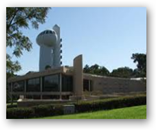Being this is the week of ASCO and the fact that I am catching up after my move this is a good time to see what the Weizmann Institute says about Leukemia. Chemotherapy alone is not able to cure and drugs are needed to supplement and attempt to eradicate. BD
Press Release:
REHOVOT, ISRAEL—May 29, 2012—The fight against cancer is not won in a single battle: long after a cancer has been beaten into  remission, it can return. The reason for this is under debate, and much is unclear. New research led by Weizmann Institute scientists shows that, at least for one type of blood cancer, the source of cancer recurrence is in a set of cells that do not proliferate as quickly as regular cancer cells, and thus are able to survive chemotherapy. The findings, which appear in the journal Blood, have some important implications for the future of the war on cancer.
remission, it can return. The reason for this is under debate, and much is unclear. New research led by Weizmann Institute scientists shows that, at least for one type of blood cancer, the source of cancer recurrence is in a set of cells that do not proliferate as quickly as regular cancer cells, and thus are able to survive chemotherapy. The findings, which appear in the journal Blood, have some important implications for the future of the war on cancer.
Cancer involves a breakdown in the mechanism that regulates the pace of cell division. When this happens, cells divide rapidly, leading to unchecked growth that overruns the body. The most common chemotherapy drugs are those which specifically attack cells that are undergoing rapid division, and these, indeed, often destroy all the cancer and cure the patient.
But there are also quite a few leukemia patients who go through chemotherapy only to have the cancer return. Why does this happen? Several explanations have been proposed. One is that the chemotherapy does not kill every last cancer cell, leaving a few to continue dividing out of control until the disease returns in full force. A second explanation proposes that chemotherapy does get all the regular cancer cells, but there is another type of cancer cell that hides in the body. As opposed to the rapidly dividing majority of cancer cells, these undergo slow division, enabling them to evade the chemotherapy drugs. These insidious cells can give rise to new, rapidly dividing cancer cells, which is why they are known as “cancer stem cells.”
Which explanation is correct? The debate is an important one because, if the first explanation holds true, improving upon the existing treatments might help, while the second implies that a completely different approach to treatment will be needed to root out the slowly dividing cancer stem cells.
To attempt to resolve the debate, the team of Prof. Ehud Shapiro of the Weizmann Institute’s Department of Biological Chemistry and Department of Applied Mathematics and Computer Sciences worked with scientists and physicians from Rambam Medical Center and the Technion, both in Haifa. They used a method of reconstructing cell lineage trees that has been developed over the past few years in Prof. Shapiro’s lab. This method is based on the fact that the genetic material in different body cells accumulates unique mutations during cell division, and these mutations are passed on to daughter cells during cell division. By comparing mutations, one can map out cells’ detailed family trees, and thus determine how far back they share a common ancestor. The end product of this analysis is a tree that reconstructs the genealogy of the cells from their earliest forebears at the base of the tree to the youngest cells at the tips of the branches.
To reconstruct the cancer cell lineage tree, the team used two sets of blood samples: the first taken from leukemia patients right after the disease was diagnosed, and the second from patients who had undergone chemotherapy and in whom the cancer had returned. The researchers could then trace the relationships of the recurring cancer cells back to see if they descended from the original cancer cells. The lineage tree showed that, at least in some of the patients, the source of the renewed cancer was not in the rapidly proliferating cancer cells, but rather in cells that were close to the root of the tree. These cells had only divided a few times. In other words, the cancer arose from cells that divide very slowly, making them resistant to the attacks of chemotherapy drugs.
Prof. Shapiro says, “We know that in many cases, chemotherapy alone is not able to cure leukemia. Our results suggest that to completely eliminate it, we must look for a treatment that will not only eliminate the rapidly dividing cells, but also target the cancer stem cells that are resistant to conventional treatment.”
Participating in the research were Dr. Liran Shlush of the Technion’s Rappaport Faculty of Medicine and Rambam Medical Center; Noa Chapal-Ilani and Dr. Rivka Adar of the Weizmann Institute; Profs. Karl Skorecki and Jacob Rowe of the Technion; Dr. Tsila Zuckerman of Rambam and the Technion; and additional investigators.
Prof. Ehud Shapiro’s research is supported by the Paul Sparr Foundation; Miel de Botton, UK; the Carolito Stiftung; and the European Research Council. Prof. Shapiro is the incumbent of the Harry Weinrebe Professorial Chair of Computer Science and Biology. His research is also supported by an ERC Advanced Grant.
No comments:
Post a Comment